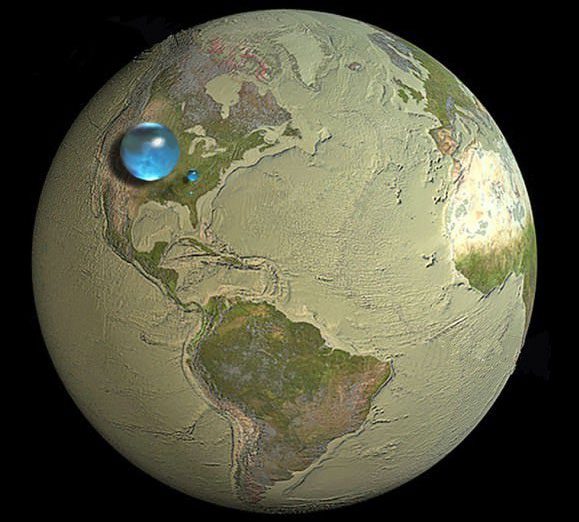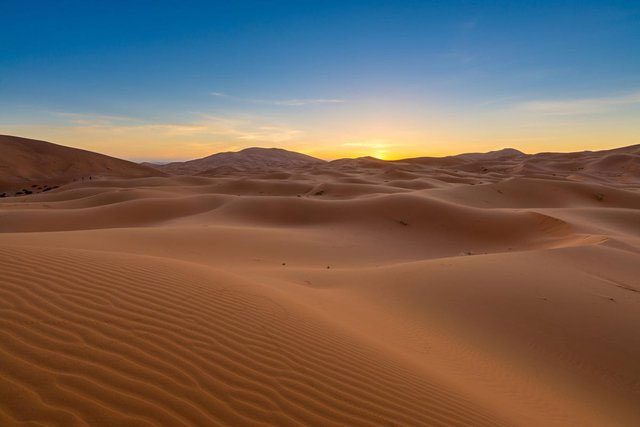Across the globe, approximately 20% of the land is covered by sandy deserts, varying from just 2% in North America to 30% in Australia and over 45% in Central Asia. Due to the harsh climatic conditions and scarce water resources found in deserts, vast areas are currently being underutilized. Many people believe that the existence of deserts is unnecessary, especially since many countries around the world are facing severe land shortages. However, scientists assert that if Earth were devoid of deserts, humanity would deeply regret it. Why is that?
1. Impact on Forest Development
Hongbin Yu, an atmospheric scientist at NASA’s Goddard Space Flight Center, states that the life of the Amazon rainforest is heavily reliant on the Sahara Desert. This relationship has been confirmed through data collected from NASA’s Calipso satellite, which measures the amount of dust transported from the Sahara Desert in Africa to the Amazon rainforest in South America.
Data gathered by the research team from 2007 to 2013 reveals that approximately 182 million tons of dust are transported from the Sahara each year. Of this, around 132 million tons remain suspended in the air, 27.7 million tons reach the Amazon rainforest, and 43 million tons are carried out to the Caribbean Sea. The volume of dust can vary depending on annual weather conditions.

The Sahara Desert is closely connected to the Amazon rainforest. (Photo: Quora)
After calculating the amount of dust moving through three-dimensional space, researchers identified additional phosphorus content in the dust reaching the Amazon. Each year, approximately 22,000 tons of phosphorus travel from the Sahara to the Amazon, equivalent to the amount of nutrients lost by the forests due to rain and flooding.
Phosphorus is a vital mineral for plant growth. Due to the dense vegetation in the Amazon rainforest, plants frequently compete for nutrients. Therefore, dust clouds from the Sahara serve as a critical nutrient supplement for plants in the Amazon.
2. Deserts as the World’s Carbon Reservoirs
It is well-known that O2 and CO2 are important atmospheric compounds. However, when carbon dioxide levels exceed permissible limits, it can lead to greenhouse effects that negatively impact Earth’s ecosystems.
In a study published in the journal Science Advances, researchers from the Institute of Microbiology at the Czech Academy of Sciences discovered a desert bacterium capable of “eating” carbon dioxide and “breathing” out oxygen. This microorganism, named Gemmatimonas phototrophica, was found in the Gobi Desert.
Their research revealed the intricate structure of the photosynthetic complex, which includes 178 pigments linked with more than 80 protein subunits of this microorganism. The light-harvesting subunits are arranged in two concentric rings around the reaction center, where the outer pigments have higher energy than those at the center, organized like a funnel. The energy absorbed by the outer pigments is transferred to the center of the complex, where it is converted into metabolic energy.

Many deserts on Earth absorb significant amounts of carbon dioxide. (Photo: Quora)
Another study conducted by experts from the Ecology and Geography Department of Xinjiang Institute of Ecology and Geography, Chinese Academy of Sciences, unexpectedly discovered a substantial amount of carbon dioxide disappearing around the Tarim Basin region of the desert. They subsequently found a massive ocean lying beneath the Taklamakan Desert.
To reach this conclusion, the research team collected deep groundwater samples from nearly 200 different locations across the Taklamakan Desert. They measured the carbon dioxide levels in each sample and discovered unusually high concentrations. According to their calculations, the Tarim Basin absorbs over 220 billion kilograms of carbon dioxide (approximately 0.0005% of the Earth’s total carbon dioxide) each year. This indicates that this area can be regarded as a carbon reservoir. Previously, scientists had never recognized any desert area as a carbon reservoir, and this finding has changed their perspective on deserts on Earth.
3. Bountiful Resources
Furthermore, deserts hold significant mineral resources. Geological processes in arid climates can concentrate minerals into valuable deposits. Groundwater beneath the desert can extract and accumulate ore minerals according to groundwater levels, forming concentrated deposits. Similarly, evaporation in deserts tends to concentrate minerals in desert lakes, resulting in various types of mineral deposits. This process has led to the discovery of mineral deposits such as copper in Chile, Peru, and Iran, and iron and uranium in Australia. Additionally, several large oil reserves have been found beneath the deserts of Saudi Arabia.

Deserts are also considered a source of mineral resources and solar energy for the world. (Photo: Quora)
In addition, deserts are regarded as important sources of solar energy due to their low cloud cover. Many solar power plants have been successfully built in deserts. Professor David Faiman from Ben-Gurion University has pointed out that with current technology, it is possible to meet the entire world’s electricity demand using just 10% of the solar energy captured from the Sahara Desert. Thus, the solar energy potential from deserts is immense.
From these three factors, it is evident that deserts are a crucial component of Earth’s overall ecosystem. If all deserts were to disappear, Earth’s biodiversity would be severely impacted, and humanity would be the first to feel the consequences.


















































